Like many artists, Michelle Holmes is inspired by her love of the natural world. Michelle’s stitched drawings onto cloth are informed by the freshness and open space of the British countryside around her, her travels to the British and European coast, and the night sky.
Michelle also loves to portray religious icons and unusual buildings, and she has a particular passion for simple, machine-embroidered line drawings of Lowry-like figures onto natural fibres. One of her figures – Betty – developed into a popular character. Michelle still stitches a Betty every week and her musings attract many followers on social media.
Michelle’s free machine embroidery and hand-stitching are sometimes embellished with applique and beading to accurately depict the highlights, tones and textures that she sees, and to enable her to explore her interest in surface qualities.
Michelle graduated in Embroidered Textiles from Loughborough University and since 1994 has worked as a full-time textile artist. She works from a studio at The Ferrers Centre for Arts and Crafts in Staunton Harold on the Leicestershire/Derbyshire border in the UK. She exhibits her work, makes wall-hangings and framed art to sell, and runs several workshops each year.
Her pieces have been shown in both private and public collections and have been exhibited extensively throughout Europe, Taiwan, the USA and the UK. She has a selection of work permanently on show at The Bluecoat Display Centre, Liverpool and “Soma”, Bristol. In 1994, she won the Best New Exhibitor Prize at the prestigious Chelsea Craft Fair and the Carroll Foundation Award. Her work is featured in numerous publications and she has designed a range of cards and a magazine cover for Neiman Marcus USA, as well as bed linen for Habitat.
Most recently, Michelle has completed a commission for P&O, designing and making two large hangings for the central staircase of the new cruise ship “Arcadia”.
In this article, you will discover why Michelle chooses to work with natural and repurposed fabrics, how she employs techniques such as raw edges and “stitch-and-tear” stabiliser, and why she swears by her trusty old Bernina.
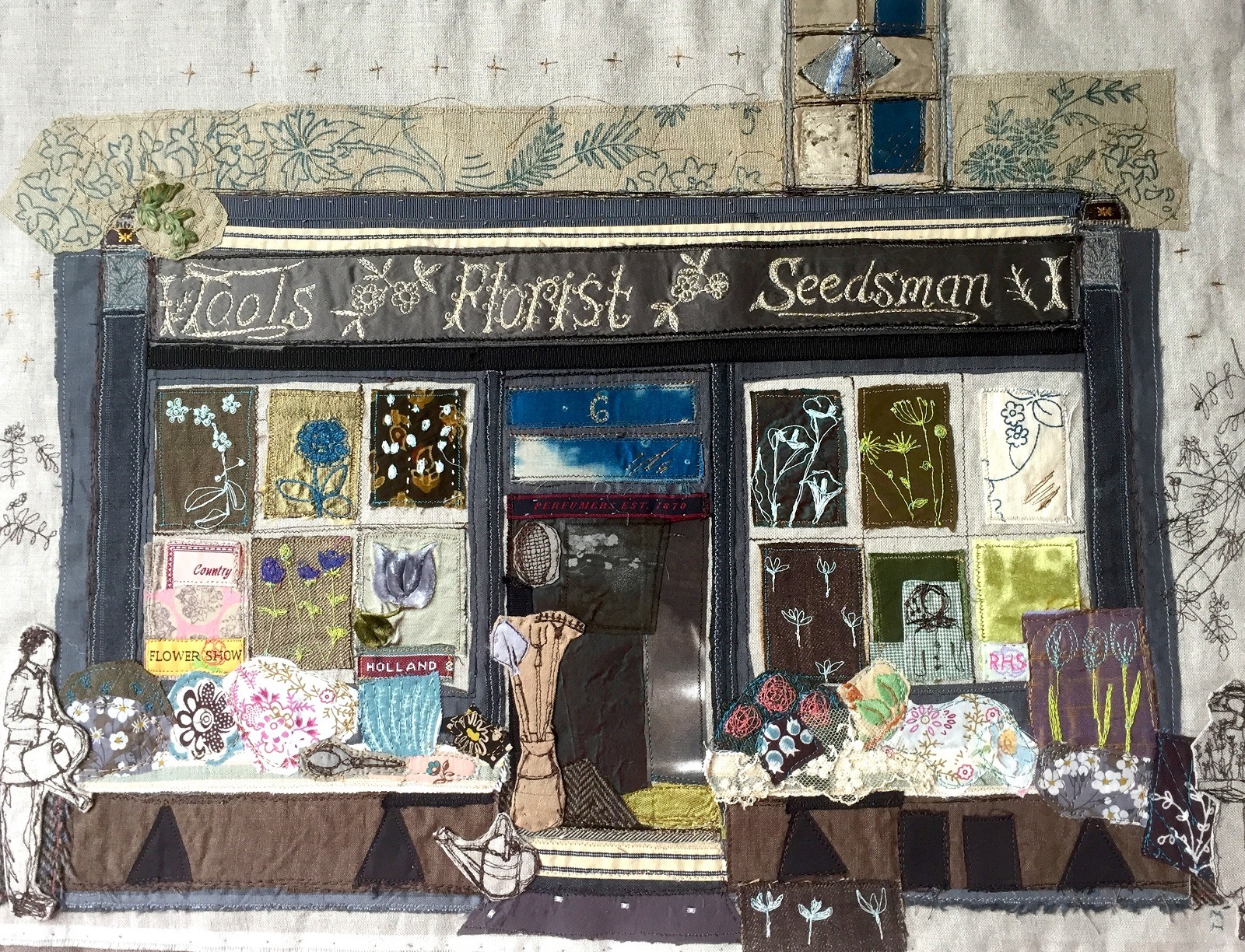
Tactile, reflective, evocative cloth
TextileArtist.org: What initially attracted you to textiles as a medium? How was your imagination captured?
Michelle Holmes: I’ve always loved the tactile, reflective and evocative nature of cloth. Over the years my growing familiarity with the medium of textiles has meant that it’s become second nature to work with them, and that has allowed me to concentrate on the development of my ideas.
I am fascinated by the similarities between a free machine stitched line and a pencil drawn line. Through observing this parallel, it has allowed me to explore my love of drawing and integrate that into my stitching.
There is such a wealth of textures and colours in materials these days – and they are so accessible – that this has made it easier and more attractive to follow, and to evoke creativity and imagination. I am captivated by the repurposing of much-loved fabrics that can hold such treasured memories and the alchemy of forming these into new creations. I like the idea that the actual materials do not need to be costly; one can repurpose whatever is at hand.
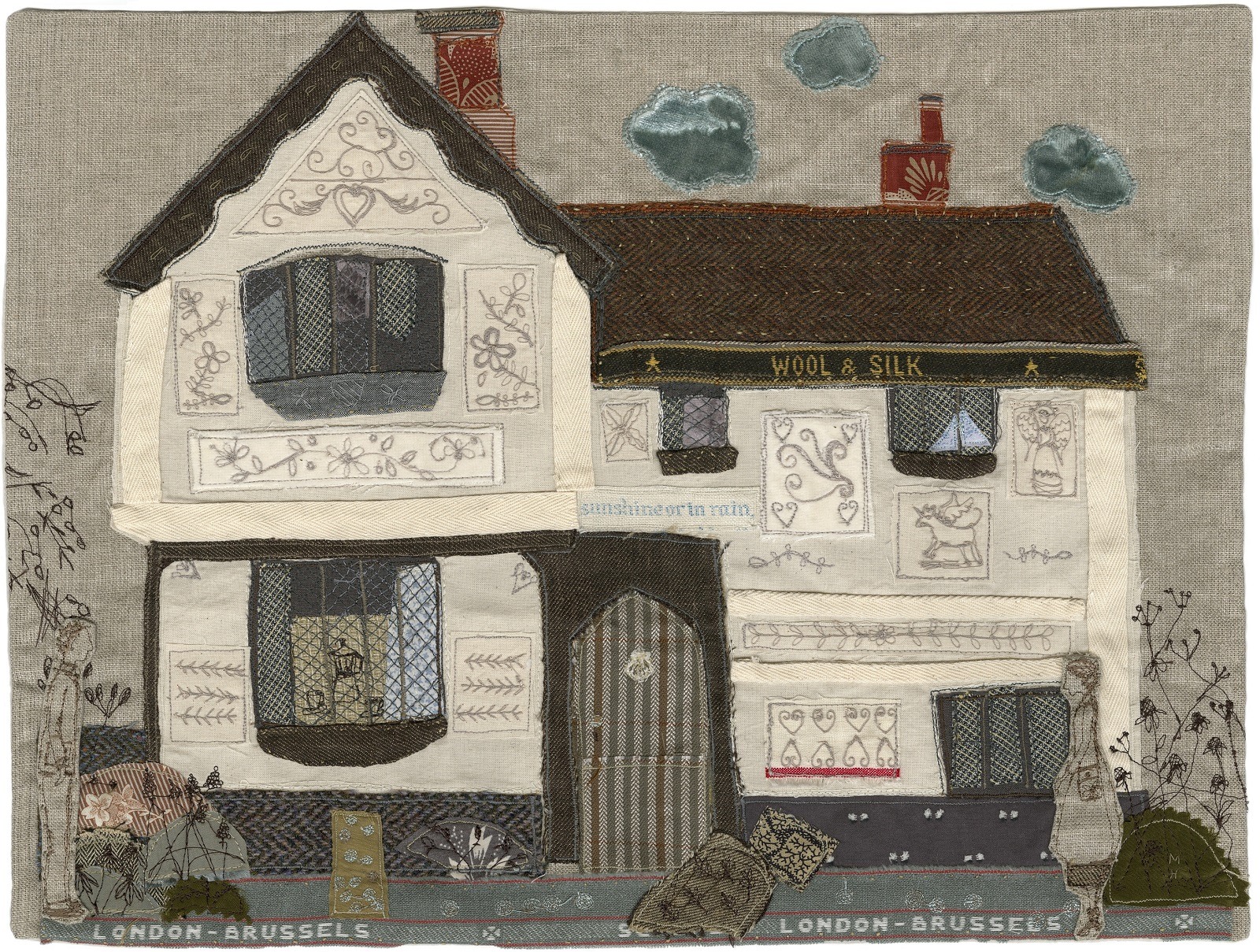
What or who were your early influences and how has your life/upbringing influenced your work?
As a child, I loved to arrange objects and observe nature. I attended a village school where we had a nature table with jars containing lots of interesting specimens. We would practice our handwriting by making the labels.
We also took part in the ancient and unique Derbyshire tradition of well-dressing which my first teacher supported. We would all be standing patiently around a clay table with the design marked out and were encouraged to press individual flower petals onto clay-covered boards, that would be used to decorate the local wells. Some of the pictures were very elaborate and it was a wonderful creative process for the children.
I also remember creating little gardens on plates for village competitions and just loving spending hours creating these intricate and beautiful miniature environments.
I was always encouraged to make by my mother and an older cousin, especially in the long summer holidays. My cousin had a picture book of projects for making pincushions or needle cases. I loved these days. I would while away many hours arranging compositions of collections of small objects: pieces of pottery found in the garden, seeds, pieces of shell. There was such a sense of satisfaction when I finally finished my task, stood back and looked with delight on my arrangement.
My mother and grandmother always had sewing projects on the go and there would be machines constantly set up for altering clothes and making curtains – it was a way of life in those days. I recall my parents making home-made presents for me; a dolls house made out of cardboard and painted green will be forever etched in my memory.
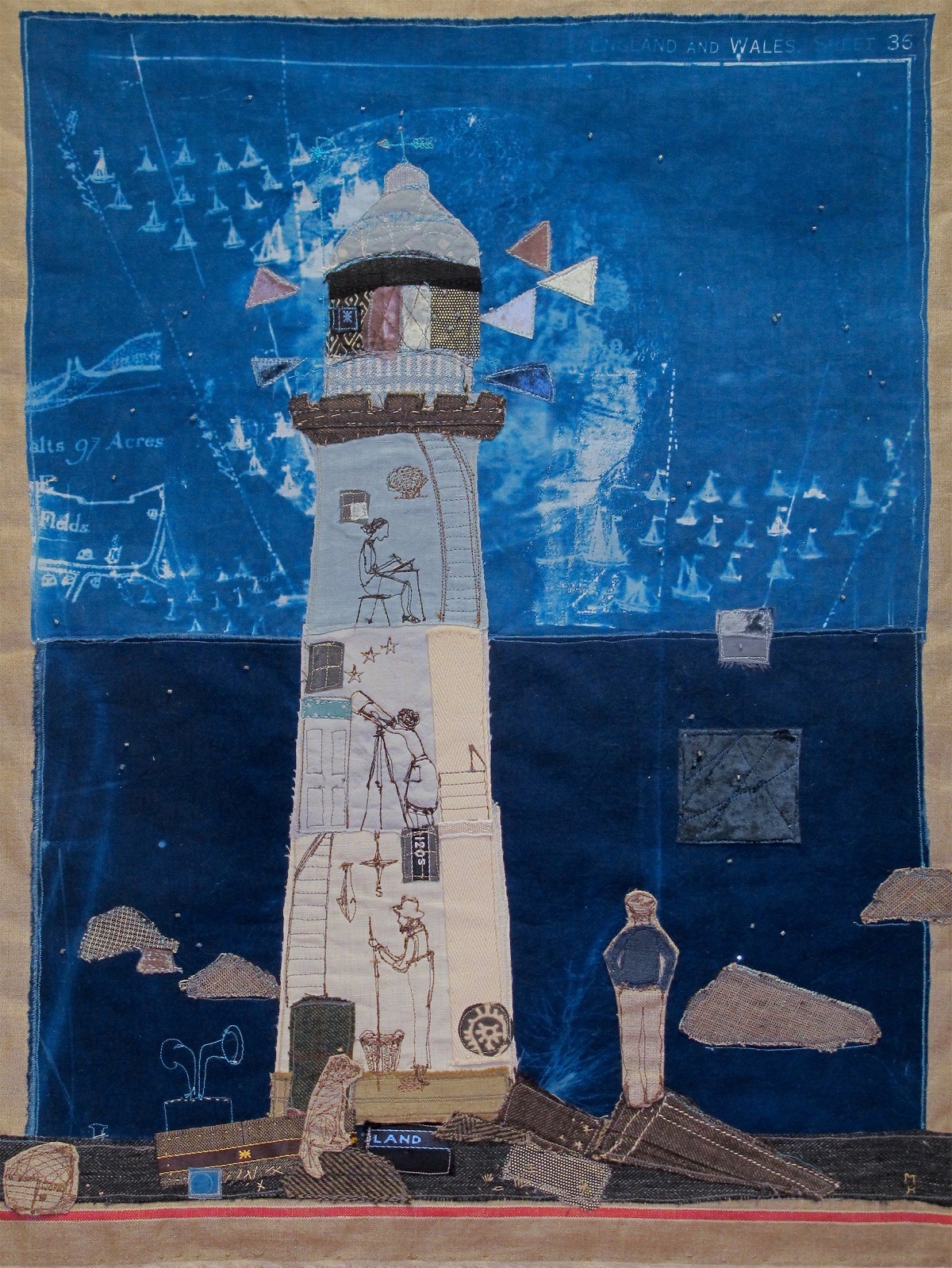
What was your route to becoming an artist?
As a teenager, I had a holiday job with a dressmaker working on theatrical dresses for special occasions. I was also fortunate to do work experience, through my school, at the Haymarket Theatre wardrobe department (Leicester) one day a week for a year. It was awe-inspiring witnessing whole costumes develop from drawings and seeing all of the different people and processes involved to create a world on the stage.
Following that, I completed a foundation course in art and design and a degree in textiles at Loughborough College of Art and Design which is now Loughborough University. I worked in a craft gallery when I first graduated; it was so lovely to be surrounded by beautiful ceramics and jewellery. It was a very informative time and the owner really encouraged my practice. I began entering open exhibitions in various galleries and from there came into contact with local arts boards. Exhibition opportunities then developed. I did not have a masterplan – I just followed the path as it unfolded.
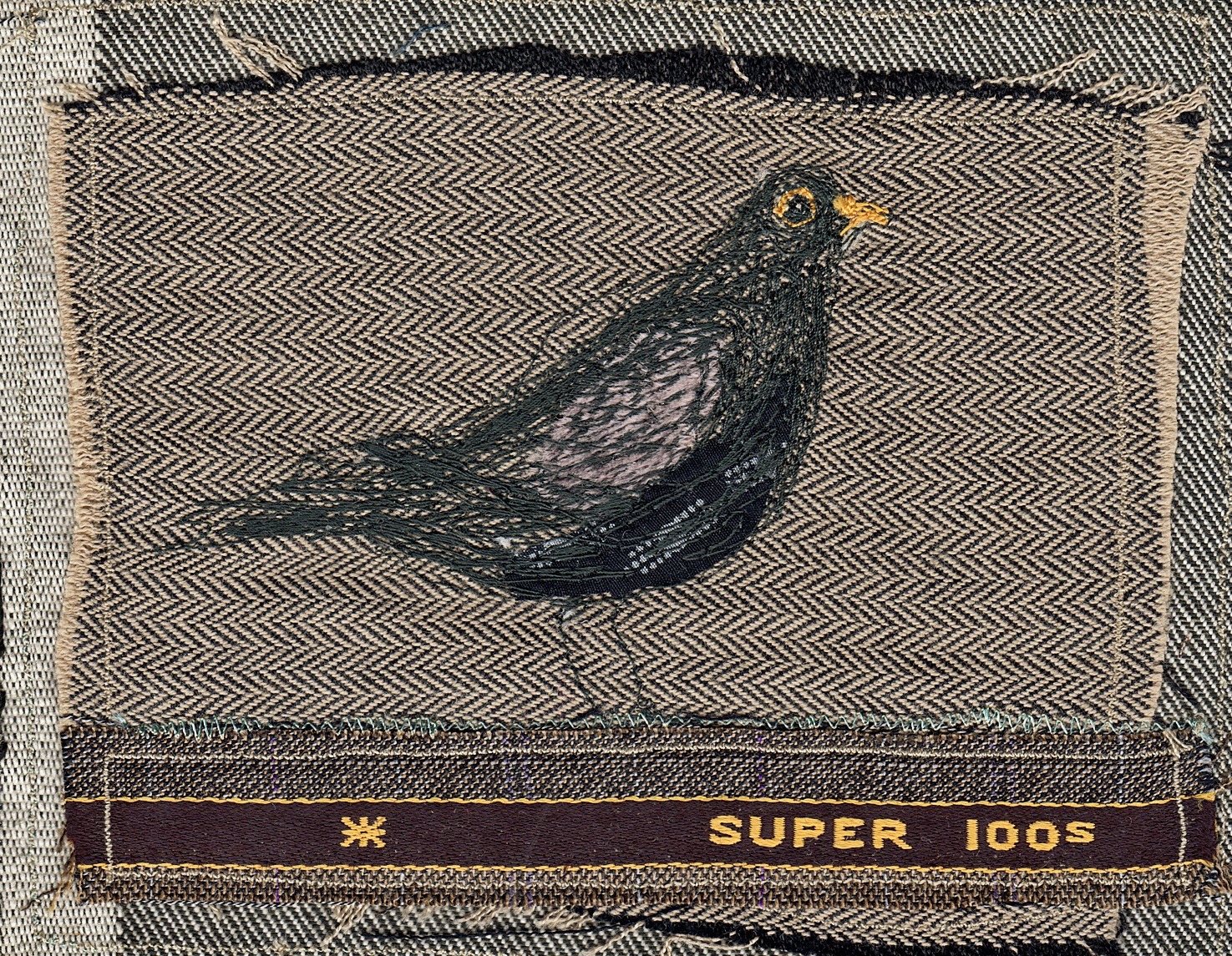
Fabric collages from repurposed fabrics
Tell us about your process from conception to creation
My creative practice is rooted in my love for drawing. I keep sketch books, drawing directly from what I see around me – trees, hedges, birds, deer, sheep, the changing seasons, buildings and people. These sketches are a resource, a record of memories that I can use to spark my imagination. I don’t exhibit my sketchbooks. I see them, rather, as journals of thoughts.
I try to take a walk every day, particularly early on or as the sun goes down. I think nature is at its best at these times – there’s a sense of peace and the light can be very beautiful.
I work by re-purposing old fabrics, full of memories for me, to capture a new idea, thought or emotion in a fabric collage. I like to explore the reflective and tactile qualities of natural fibres: silk, linen, wool and cotton. The stitching is a mixture of free machine embroidery made on a domestic sewing machine and hand stitching. It was during my degree that I started to stitch quirky characters and set them into landscapes.
When I am creating I often listen to quite meditative music and I become very focused. I gather the fabrics and begin to collage them into backgrounds. It can be quite a journey to make a piece of work, taking lots of concentration to get all of the elements of line, colour, texture, subject and shape to work together. I feel so excited when I know something is working for me – when a piece is conveying what I want it to.
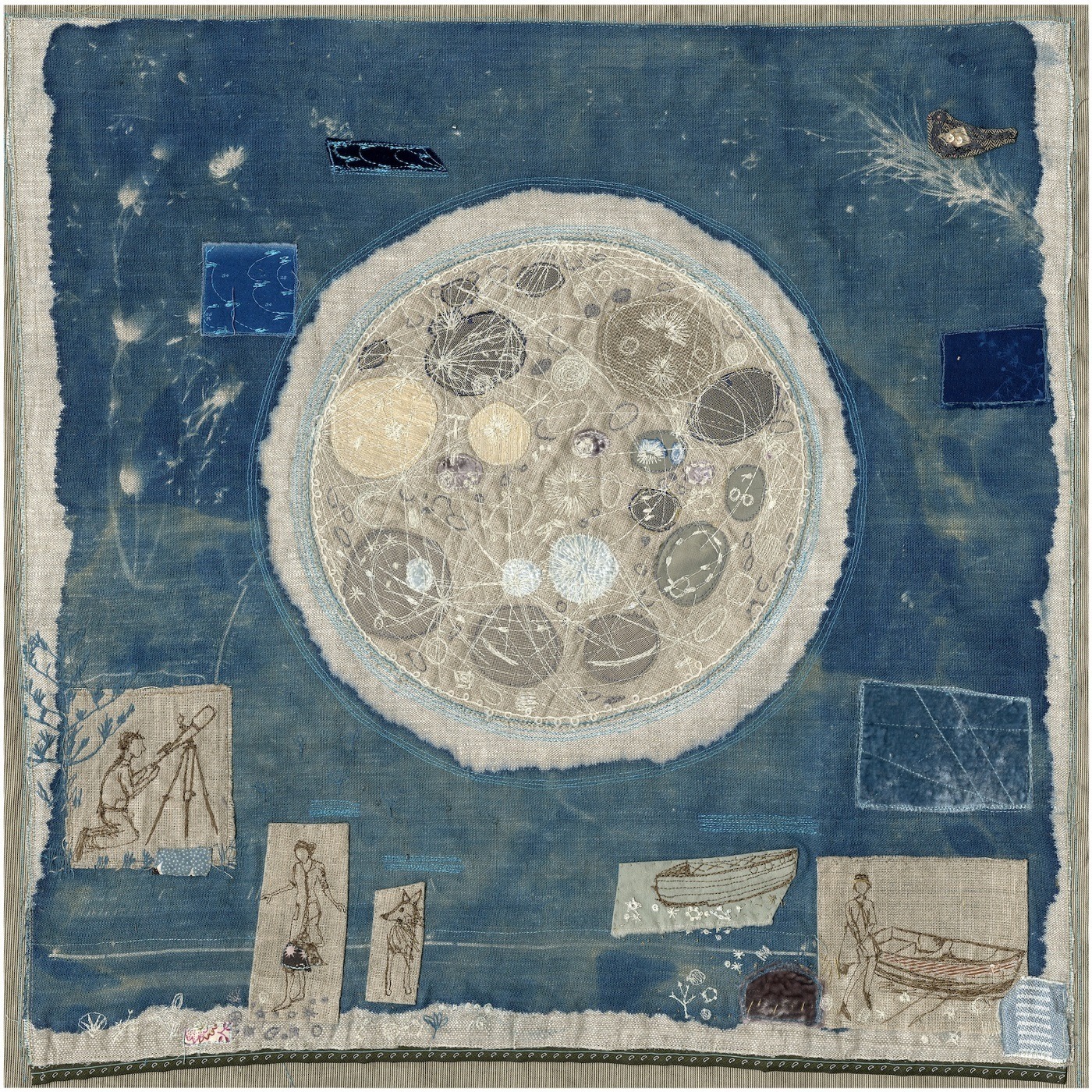
Tell us a bit about your chosen techniques and how you use them
I like to work with natural fabrics, like linen, cotton and silk, mainly because of the way their surfaces reflect light. Heavyweight calico, which when hand-dyed in my kitchen provides a lovely soft base, has been a base cloth for many a piece of work.
I am constantly collecting pieces of cloth for the appliqués, and find friends and clients pass small scraps and old clothes on to me. Recently I have begun using ‘cyanotype’, better known as blueprint, fabric for my backgrounds and a medium-weight unbleached linen.
I spend many hours at an ironing board collaging the fabrics into the chosen compositions.
I prop up sketchbooks in front of my sewing machine and refer to these as I stitch. I do not draw designs out with a pencil or anything first. Working directly onto the cloth allows me to work quite spontaneously; even small stitches suggest mood, atmosphere and add life.
I do not use the stitch regulator. I welcome the irregularity of the stitch, that is why I like to use a Bernina because I have full control and can express my drawings as I wish. I do not want them to look too mechanical. That, I think, is the beauty of machine embroidery – the human element.
I use ‘stitch and tear’ to stabilise the fabric rather than using a hoop. I find a hoop stops me from moving the fabric so easily when the design grows.
Sometimes I leave the edges raw and stitch the fabric onto Fabriano hot pressed paper which is a lovely cream colour.
My final stage is to add hand-stitched elements and beads. I do not particularly use formal stitches; instead, they are quite random and I see them as texture.
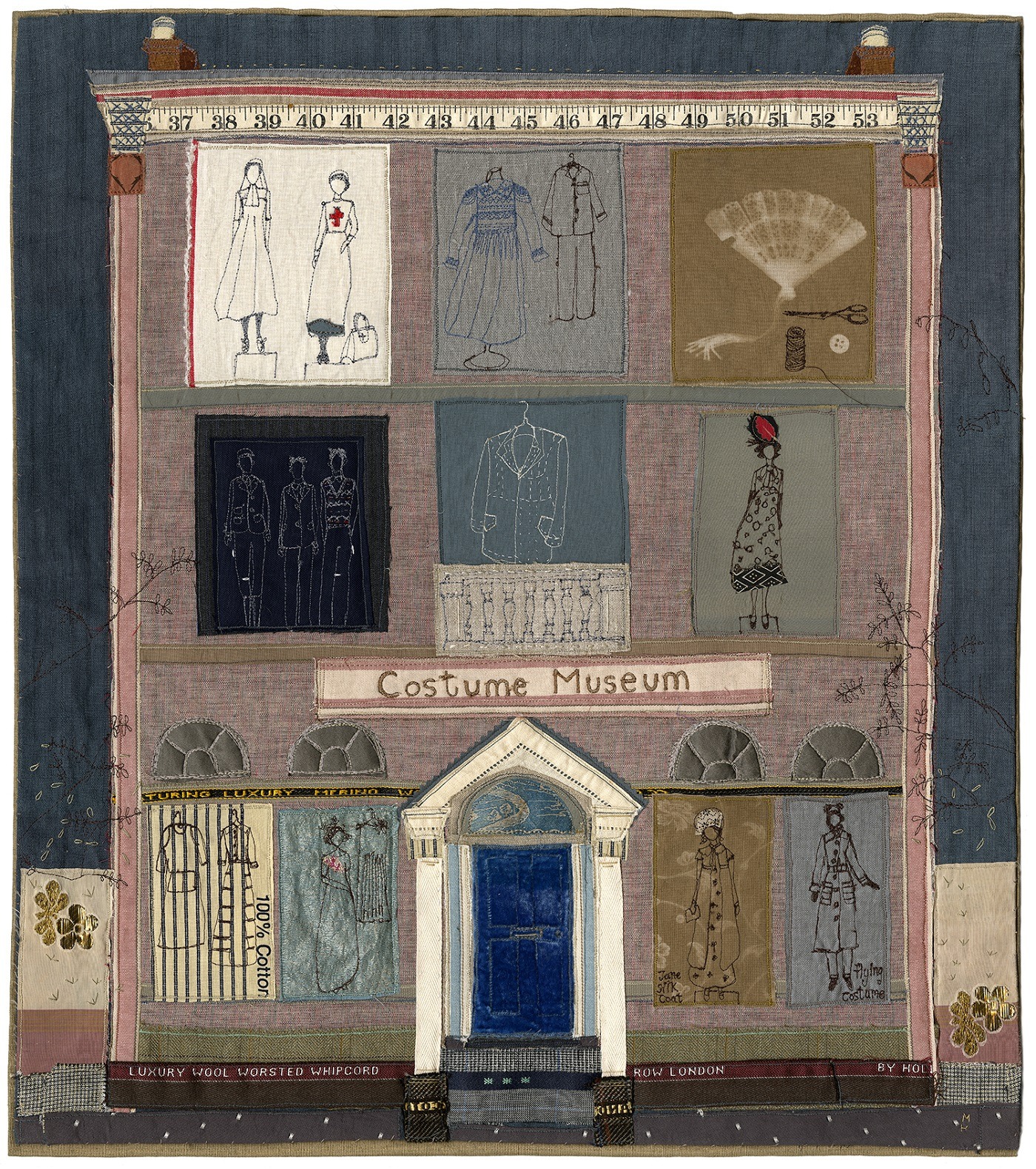
I received my Bernina 1015 at the beginning of 1992 as a present from my parents to create my degree show work with. We collected it from a little sewing shop in Derby on a Saturday and I spent the evening creating. Before this, I had borrowed one from my Art College and used to have to carry it to and fro. It was quite heavy and a challenge, as you can imagine.
My other Berninas are a Bernina 830 Record, a Bernina 830 (vintage), a 1005 and a Minimatic 80 -, a very lovely little travelling machine which I will always hold on to.
I have purchased them second hand or been given them. One belonged to a lady who had purchased it in South Africa. She had passed away and her husband was selling it. The Minimatic had belonged to a friend’s mother who had used it for her City and Guilds in Embroidery. When she passed away her daughter gave it to me. They all seem to have stories.
When I’ve been doing my character, Betty, I window mount the picture with a maize coloured board and usually frame her in Oak. On a few of the larger ones, I back the design by placing the design right sides together onto a lining and stitching around the edge and then turning the design through. Hand stitching the hole and then hand stitching the piece onto an acid-free cream board which I would then frame in a box frame to hold the glass away from the fabric.
I do not draw Betty or my other figurative images out first. I just begin with my tea coloured cotton fabric. I do often have my sketchbooks propped up on my desk to draw inspiration from.

Betty started off as a character in a larger piece of embroidery which was for a customer, based on her family. She is based on several people including my grandmother Doris, a childhood neighbour named Millicent and a character, Lady Isabella Bird, from one of my favourite books ‘A Lady’s Life in the Rocky Mountains’. The name seemed to suit her (actually, she was nearly called Isabella). Betty always wears a spotted skirt, plain shirt and sometimes a duster coat. She is often to be found pottering around the countryside, contemplating the natural world and observing everyday occurrences.
Betty, herself, measures about 9cm high. The average size of the embroidery is around 15 x 17 cm.
I have been making her mostly since 2013. I still create a Betty each week and have done since the first posting on 17 January 2017.
They are all different and I try not to reproduce them, though certain themes come around each year as I am interested in the rhythms of the seasons and nature.
Betty was created for Facebook really. It is her platform. I had wanted to make a diary-type embroidery of thoughts and it meant I stitched at least one thing each week. There are a couple on my website under figurative pieces. Eventually, I am going to compile a book of Betty’s.
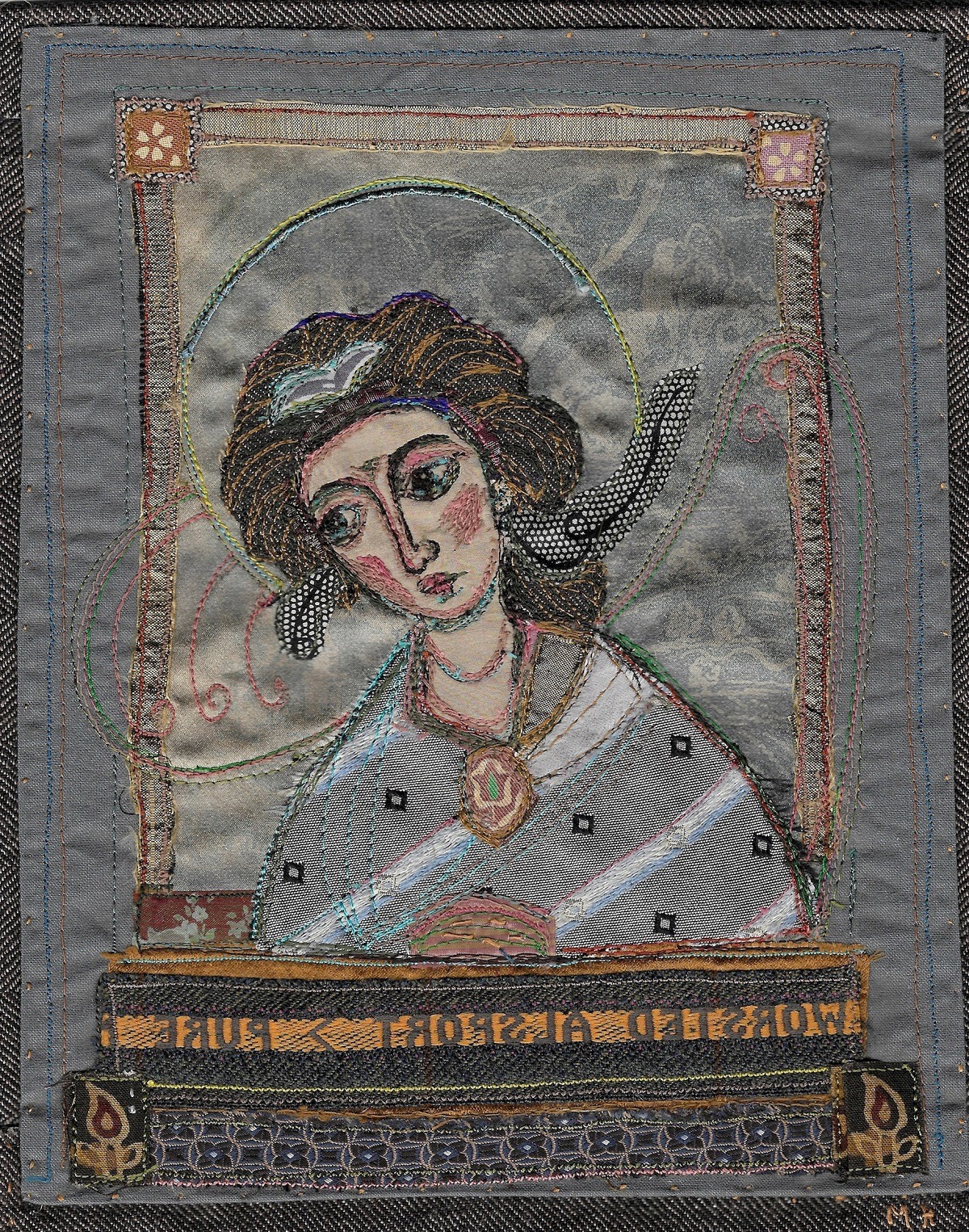
What currently inspires you?
Creating work that in some small way represents my place in the world. The artistic process, I think, is a way of me trying to connect the things that I observe in the world. To do this I am combining ideas and materials to work together to create my little worlds. The pieces are exploring, in their most basic form, the questions ‘How did I come to be here and what am I here to do?’.
I have been listening to Neil MacGregor’s series ‘The History of the World in 100 Objects’ from the British Museums collection. It really helped me to contextualise this need to make ‘things’ which are more than useful or practical, but also describe some small part of the life of the person who made them – an interpretation of their world. I particularly connected with the idea of a sense of delight and appreciation of the natural world which some of these objects held. Through my work, I have always felt a need to do this. Making art is an interpretation of the world.
My influences include boro textiles, folk art, seventeenth-century English embroidery, samplers, the paintings of Mary Newcomb and Samuel Palmer, folk tales, maps, medieval carvings.
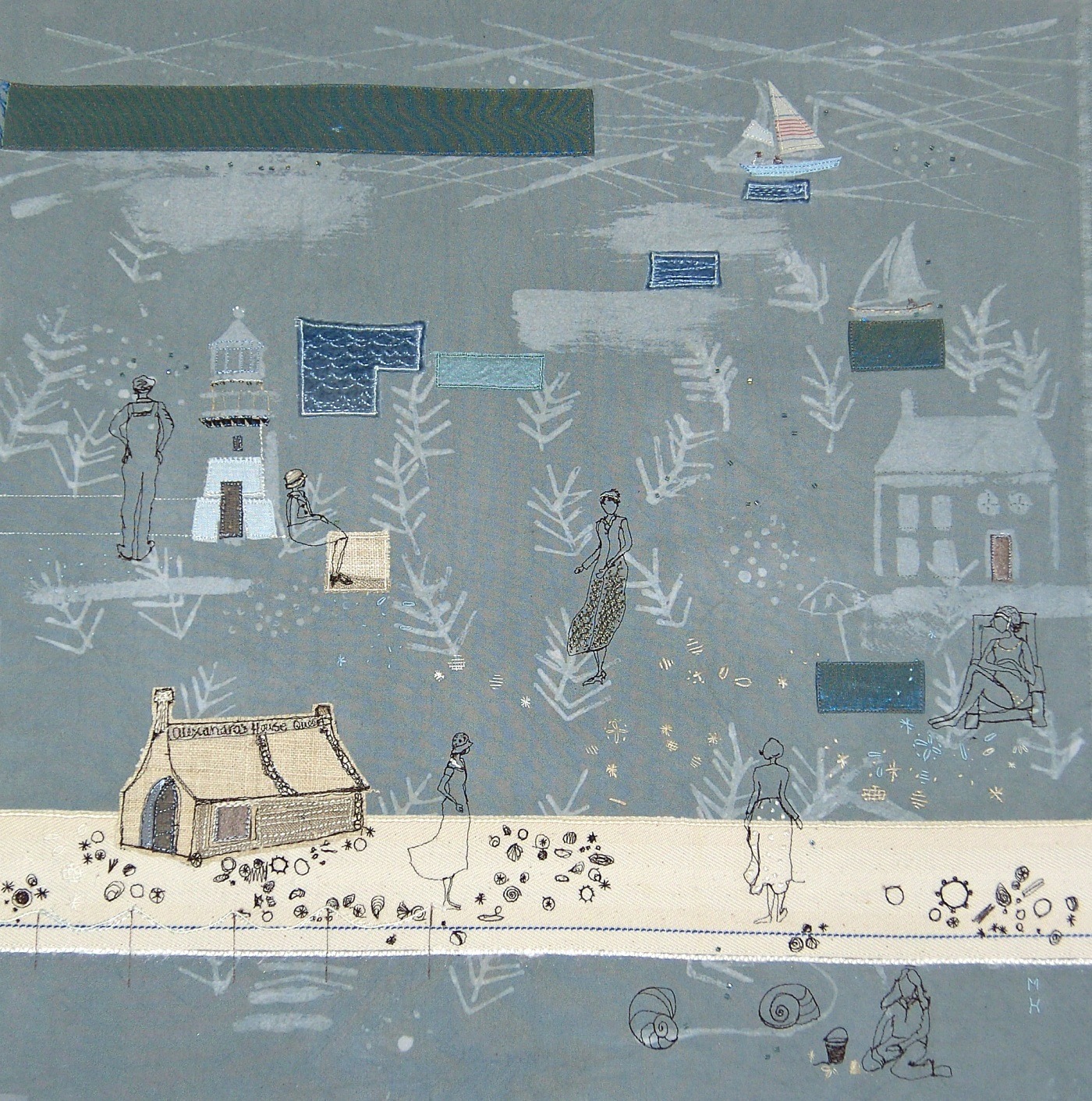
Nourish your practice with time
Tell us about a piece of your work that holds particularly fond memories and why?
‘My little house by the sea’. The piece was made quite a few years after a visit to Norfolk and is based on a black and white photograph I found in a museum of a little house once owned by Queen Alexander which no longer exists.
This piece came together quickly and captures the magical remote quality of Norfolk – a place special to me since childhood. I was pleased with the beach as I am fascinated by how each tide brings in new shells and sand and makes the whole beach like a new composition.
I think this is a hopeful, calm piece and I wanted the embroidered figures to represent this.
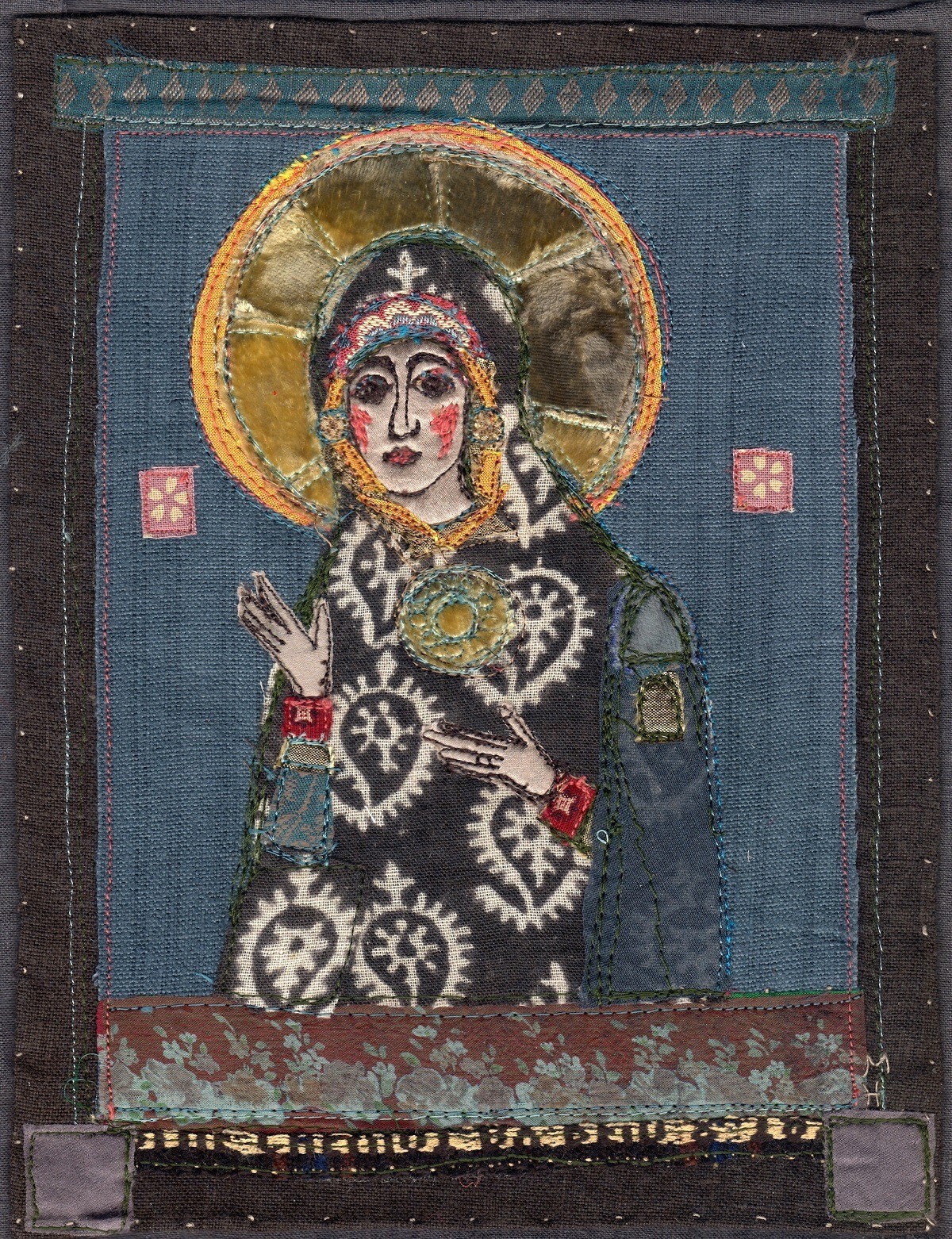
How has your work developed since you began and how do you see it evolving in the future?
Interestingly, I feel my work is becoming more rooted in the countryside I inhabit, the observations I make on a day-to-day basis and the history of the places which make up the landscape.
Lately, I have created embroideries inspired by spiritual and religious figures and iconography which will culminate in an exhibition at Launde Abbey (Leicestershire) for its 900th anniversary later in 2019.
Angels have been a constant branch of my work through the years. I live not far from an old priory, Breedon on the Hill. Within the Church, there is one of the earliest Medieval examples of a carved sandstone angel. The angel stands with flowers and seems so connected to the countryside around. Inspired by this I will continue to explore illumination, insight, and nature.
I would like to explore more quilt making, piecing my works up into larger stories.
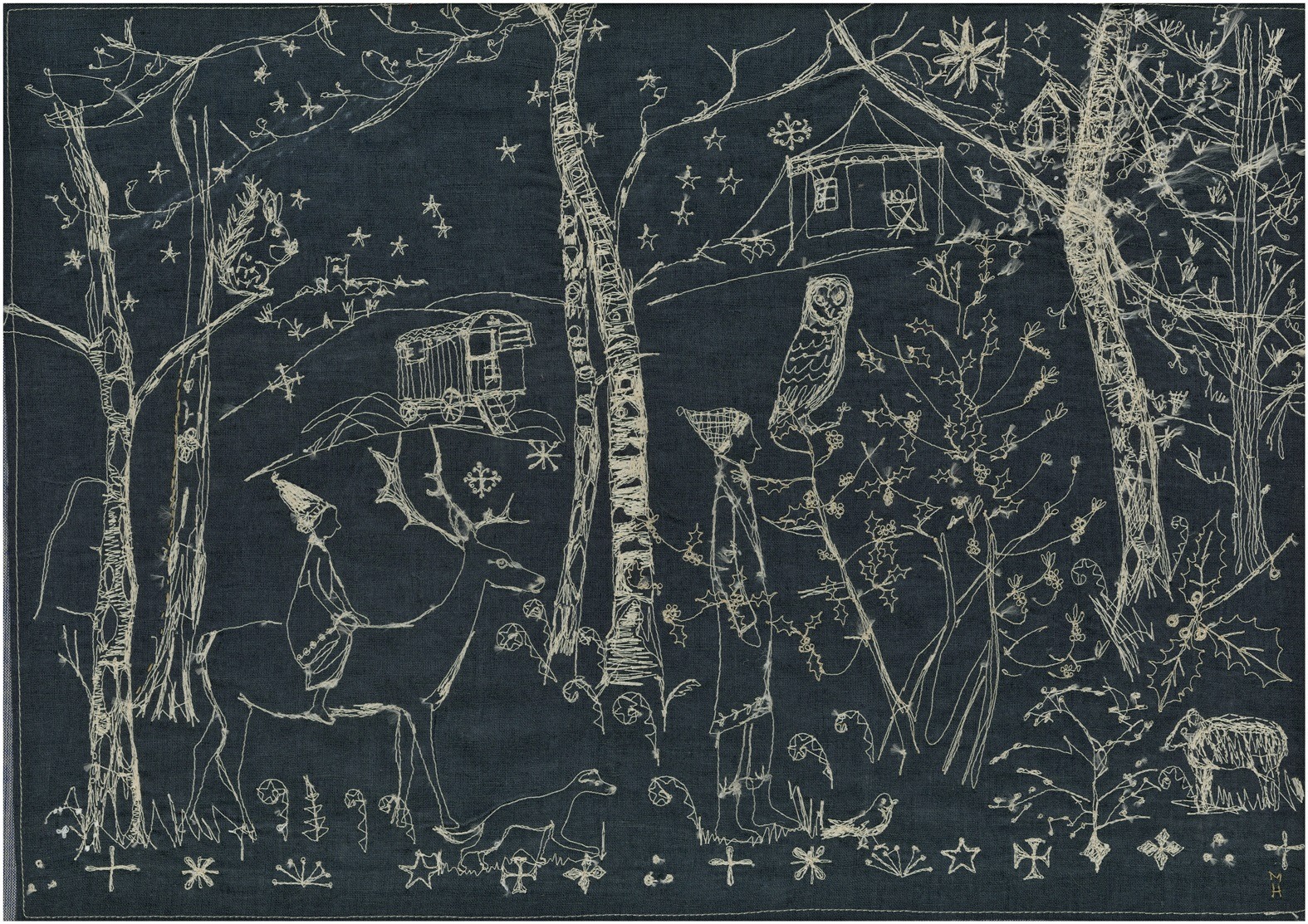
What advice would you give to an aspiring textile artist?
A textile artist, whose work I very much admire, once said to me “Follow your own star, Michelle”. I found this to be so encouraging and liberating and I would advocate this to any aspiring artist.
Stay true to your vision – it is unique. Spend the time making, and nourish your practice with time. Exhibitions and meeting customers are a boost, but the majority of time should be spent in the making – a quiet activity. There is a balance to be found.
Find a supportive group of fellow artists with whom you can share the journey, the highs and lows. Hopefully, you will not all be going through a low at the same time! For me, there have been peaks and troughs in my work. It is not a level path, so one has to hold steady all the time.
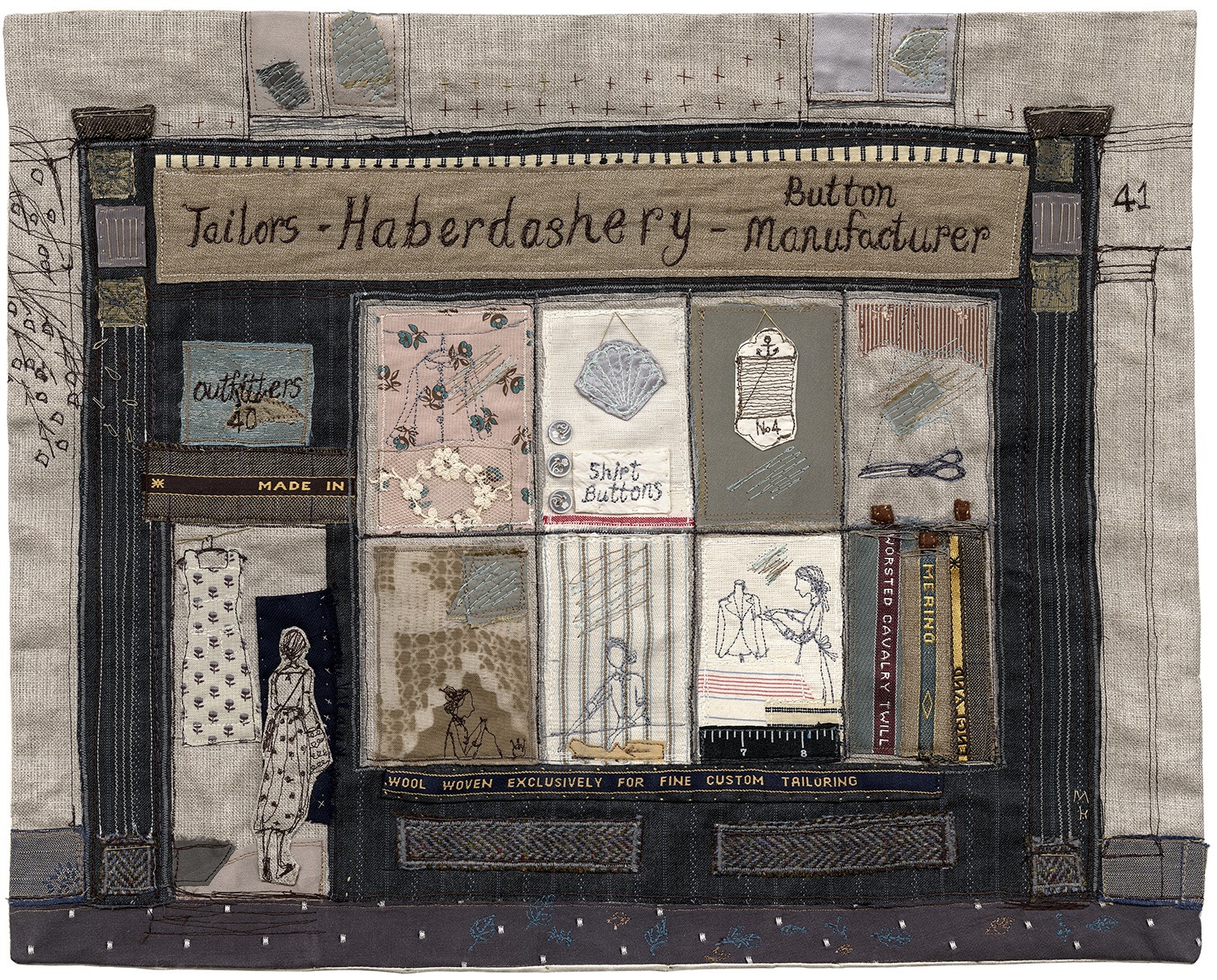
For more information on Michelle and her work you can visit her website www.archangelstudio.co.uk , Facebook and Instagram
Have you ever repurposed old fabrics like Michelle? Let us know how by leaving a comment below
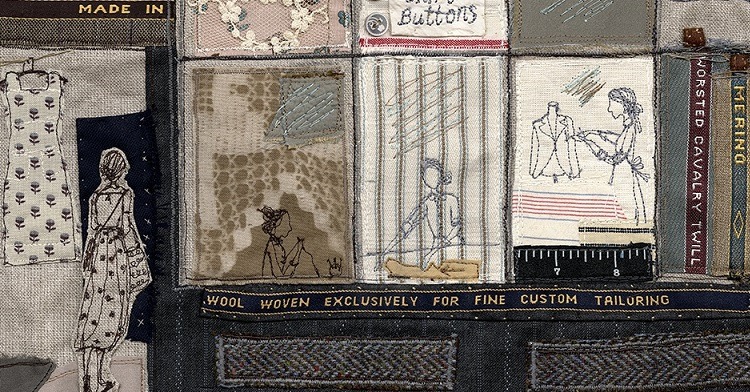

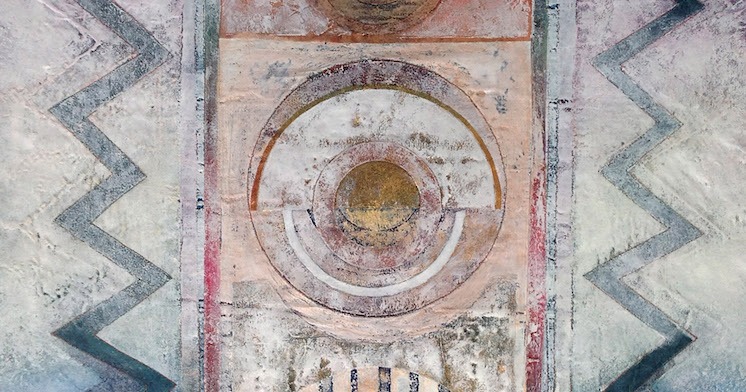
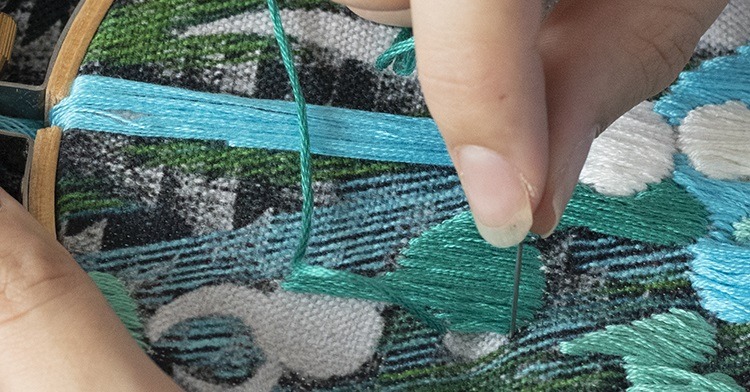
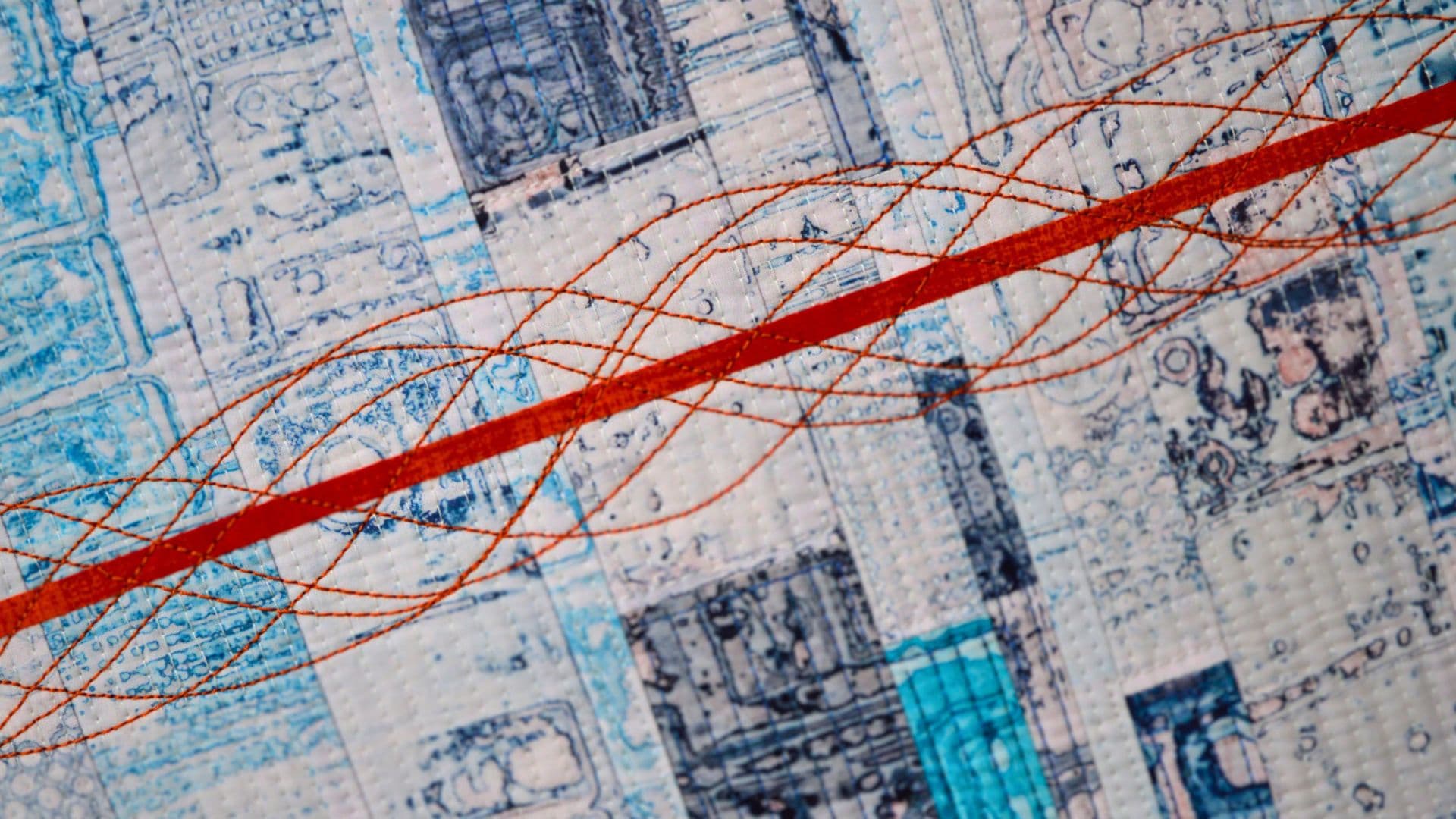
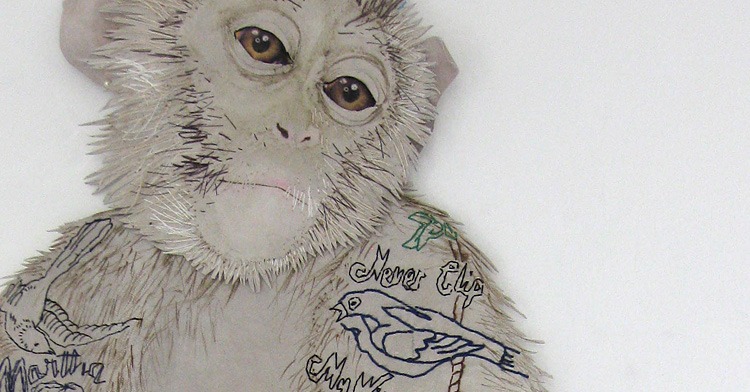
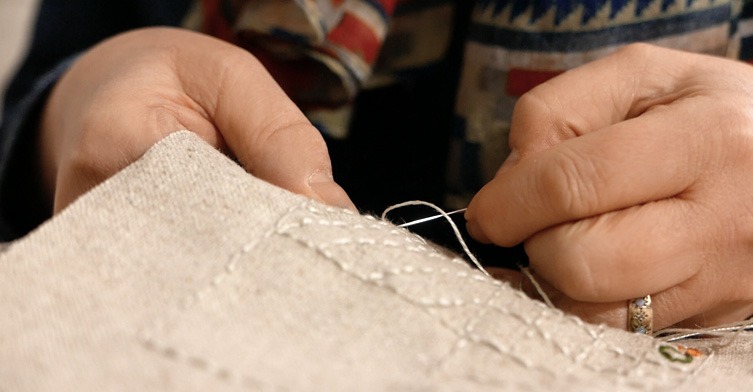
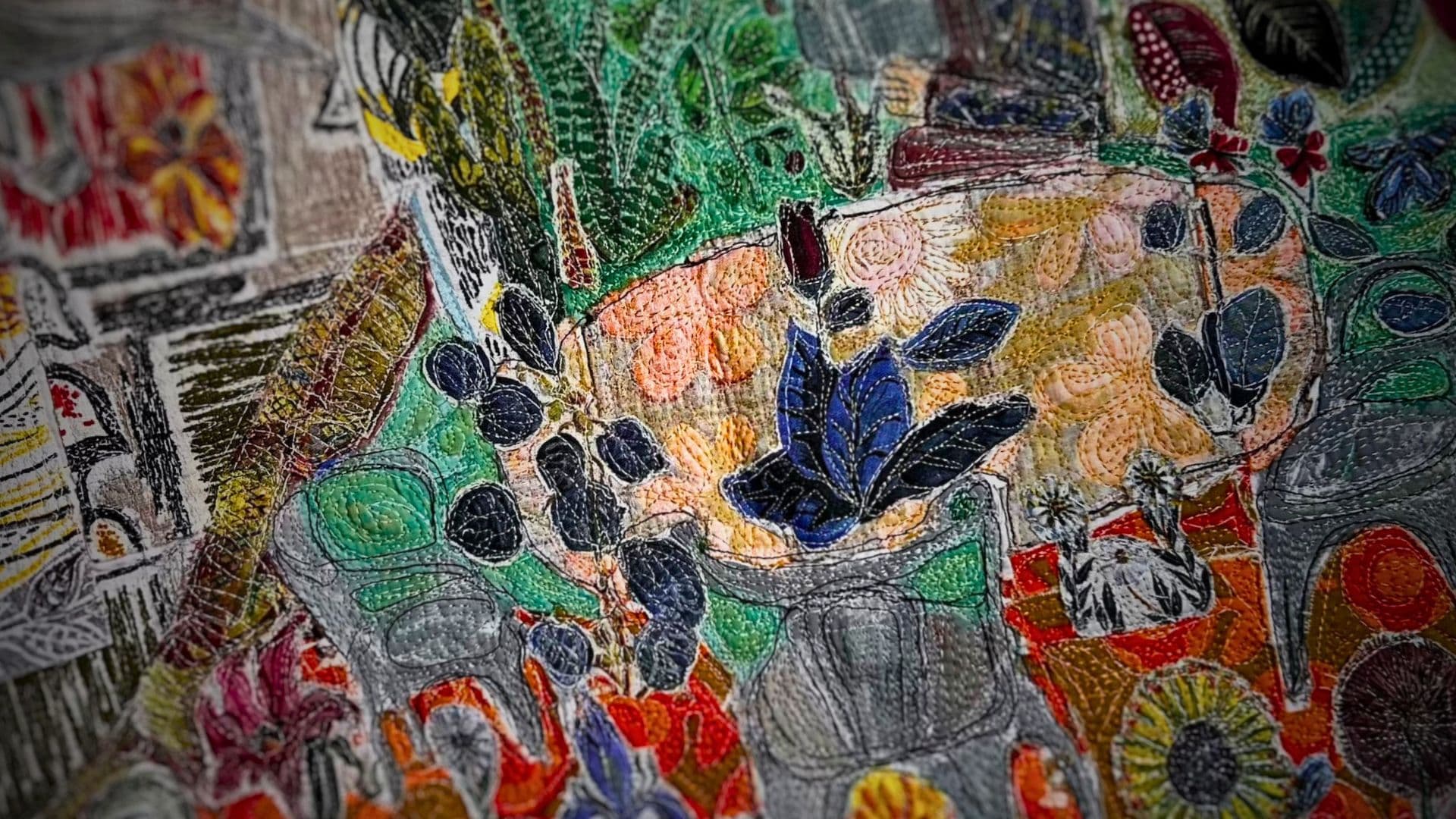
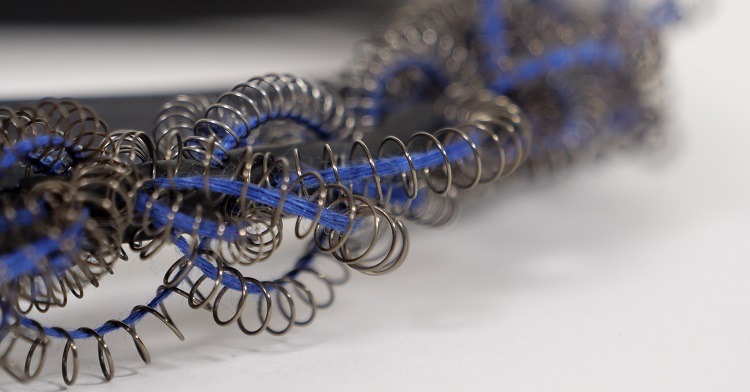
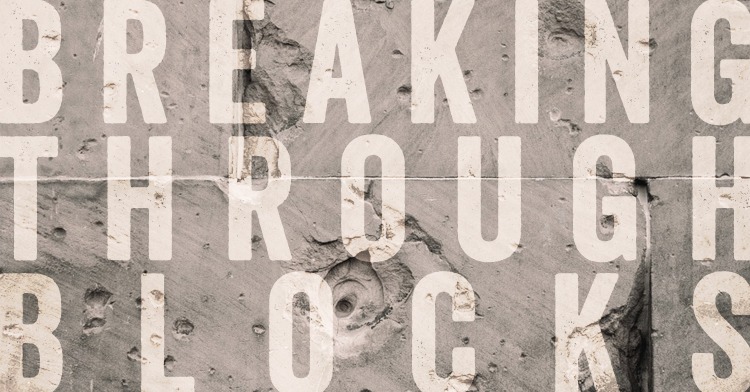
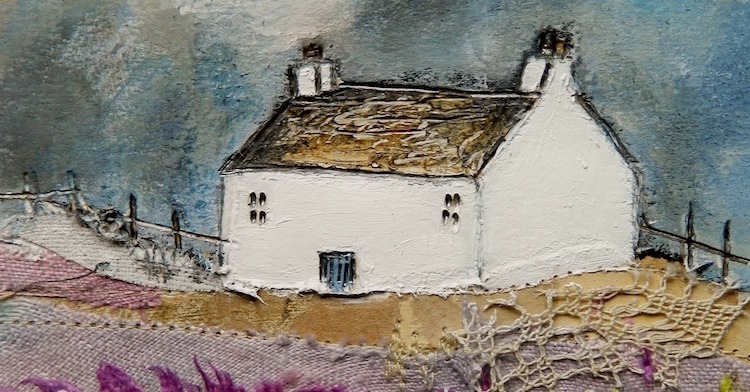
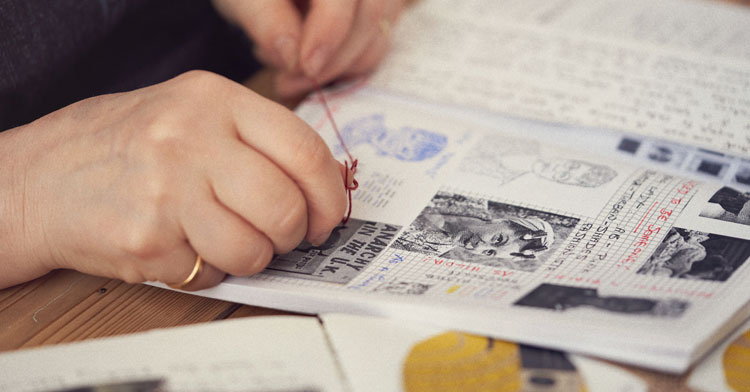
7 comments
Angela
Love your work . Please can you do a workshop for the Textile Artist Stitch Club using machine embroidery techniques (maybe even using Betty!!)
Marianne
I love your work, particularly the Bettys. I have been a fan for awhile and have been inspired to try a little machine embroidery. In the meantime I am awaiting the arrival of a Betty embroidery I recently bought from your studio. Thanks for an interesting article.
Karen
Love your work, it is related to life in such a real way.
rose
what a lovely eye for detail and accuracy in your creations, which creates such beautiful installations.
Jackie Howard
Loved reading your article , just wondered what village the primary school was in where you did well dressings ? ( as there are only a handful)
Jackie from Derbyshire !
Maggie Reynish
Love your work,do you hold classes.
Jill Willis
I use repurposed fabrics all the time for making tiny textile collages and gifts such as embroidered hanging bird decorations. I enjoy working within the limitations that doing so imposes, although I have to admit to very occasionally buying a piece of fabric that I haven’t been able to find in charity shops or boot sales, e.g. just the right piece of organza! I try to use only my stash of inherited or charity shop embroidery threads, too, but have recently had to buy a few skeins in particular colours.